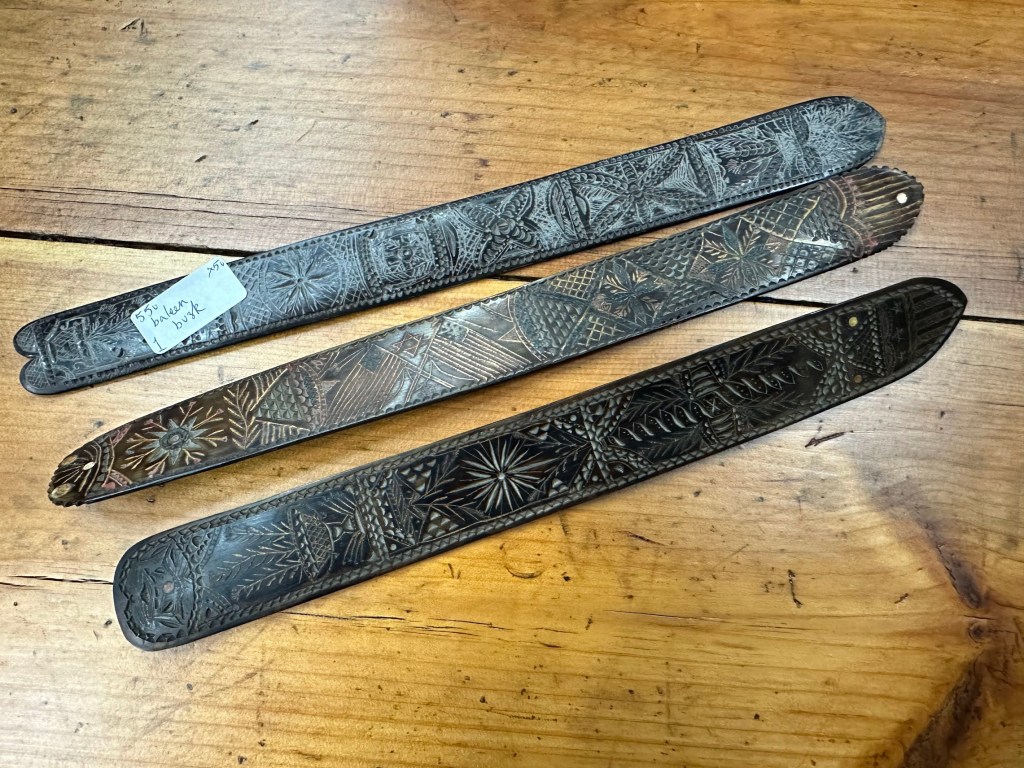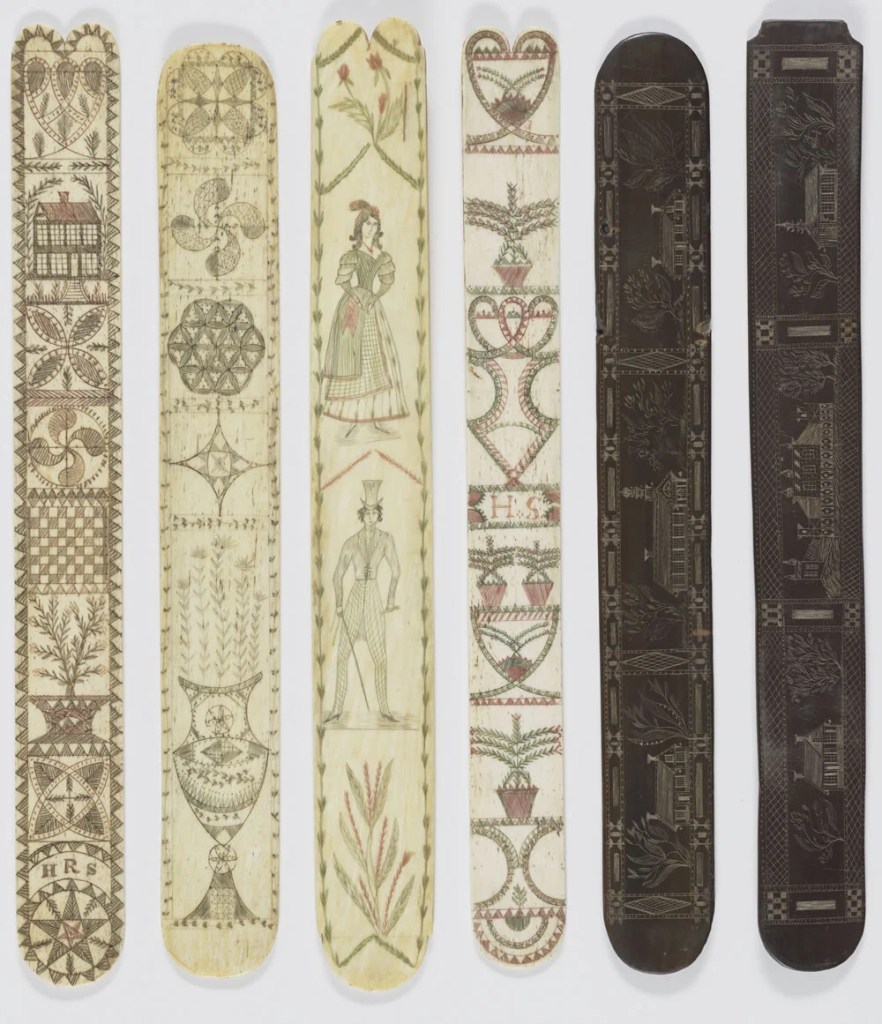On my recent visit with my mom and dad, who live in Southeastern Massachusetts, I popped into my favorite antique store for a quick look. As I passed by the front cabinets, I glanced in and to my surprise came across these beauties.


Three beautifully preserved hand-carved baleen busks. After I scooped my lower jaw up off the floor, I dated these to have been created somewhere in the late 1700’s to early 1800’s. Baleen busks such as these were popular from the early 1600’s through the late 1800’s and first appear in the wardrobe accounts of Elizabeth I, Queen of England, in the 1580s.
I asked if I could see them more closely to capture some quick photos. (I really wanted to stuff them in my pocket and run but I held myself back). The staff member who helped didn’t have any information on the provenance or where they were found, unfortunately, but seeing as we were near the former whaling capital of the United States, I can only assume they came from a local estate.
These three are intricately carved on both sides, covered in folk symbols, six and eight pointed stars, vegetation, and wheat stalks. The one in the center also contains two flags with 8 stars, which leads me to believe that particular one may have been carved sometime around the American Revolution in 1765. However, it’s hard to know for sure.
Busks such as these would have been inserted into a vertical channel sewn down the middle front of a ladies’ corset, between the breasts. It would then be tied into place at the top to keep the corset (and subsequently her posture) straight and upright. Looking closely, you can see the small holes along the top and bottom of the busks that held them in place). A wide (¾”-1″) busk like these helped create a smooth line along the front of the body. Busks such as these were often made of baleen, wood, or ivory and would have been carved with different symbols by men on whaling ships. Sailors would often carve love symbols, pictures of their vessel, foliage, or sentimental messages into them and give them as gifts to the ladies they left ashore. It was seen as an intimate gift, worn close to the heart and inscribed with messages of love or a future imagined together. When not worn, these likely would have been kept in a special, lined box or drawer.
Baleen (often mistakenly referred to as whalebone) is a fibrous material removed from the upper jaws of baleen whale. It is firm, yet flexible, similar to human fingernails. Baleen whales (some of these are more commonly known as blue, humpback, grey, right, fin, and minke whales) have baleen plates in their upper jaws, rather than teeth. These plates allow them to feed on large quantities of prey at once, filtering out any seawater and they eat. Baleen was stripped from whales and used in corseting and other parts of fashion that required firm yet flexible structure such as collar stays, hat brims, and hoop skirts. It was also used for common items like like horse whips, fishing baskets, and umbrella ribs.
You can find many good examples of carved busks in art museums and auction houses around the world, and it is fascinating to see the variation in style and design they contain. A few even have dates inscribed on them, some have written messages. Baleen and wood ones seem to have simpler carvings than ivory ones, but are equally beautiful in their own right.

Image from Colby College, Waterville Maine (Artist unknown, American Scrimshaw Corset Busks, c. 1845. Ivory and baleen, ink. Various dimensions. Gift of Mr. and Mrs. Ellerton M. Jetté, American Heritage Collection 1956.103)
References:
Sarah A. Bendall, ‘Whalebone and the Wardrobe of Elizabeth I: Whaling and the Making of Aristocratic Fashions in Sixteenth Century Europe’, Apparence(s), 11 (2022), p. 12 doi:10.4000/apparences.3653
Oliver Egger, October 4, 2023, Scrimshaw Was the Whalemen’s Art: A pastime for the homeward voyage, Provincetown Independent. Available: https://provincetownindependent.org/local-journalism-project/next-generation/2023/10/04/scrimshaw-was-the-whalemens-art/
Lisa Hicks, April 29th, 2015, From Whale Jaws to Corsets: How Sailors’ Love Tokens Got Into Women’s Underwear. Collector’s Weekly. Available: https://www.collectorsweekly.com/articles/how-sailors-love-tokens-got-into-womens-underwear/